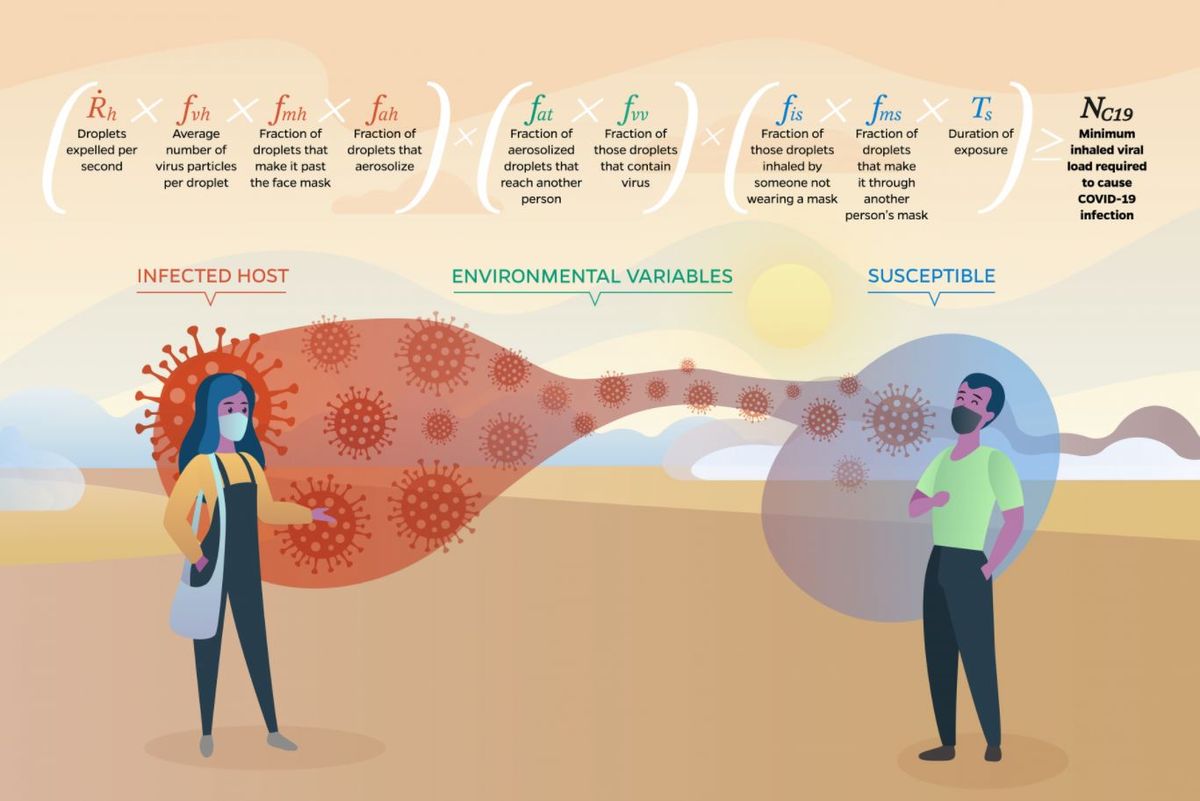
A famous equation used in the search for alien life has inspired a new model that estimates the odds of COVID-19 transmission.
The new model — which is essentially a single equation with several terms multiplied together — estimates the risk of COVID-19 transmission through the air. The researchers were motivated in their work by another simple, yet historically significant mathematical formula known as the Drake equation, which estimates the chances of finding intelligent extraterrestrial life in our galaxy. Developed in 1961 by astronomer Frank Drake, the equation is based on just seven variables and provides an "easy-to-understand framework" for looking at something as seemingly unknowable as the number of alien civilizations, the authors said.
They wanted to provide a similar framework for understanding COVID-19 transmission risk.
<iframe src="//www.ultimedia.com/deliver/generic/iframe/mdtk/02660155/src/fxfzxu/zone/2/showtitle/1/" frameborder="0" scrolling="no" marginwidth="0" marginheight="0" hspace="0" vspace="0" webkitallowfullscreen="true" mozallowfullscreen="true" allowfullscreen="true"width="452" height="300" allow="autoplay; fullscreen"></iframe>
"There's still much confusion about the transmission pathways of COVID-19. This is partly because there is no common 'language' that makes it easy to understand the risk factors involved," study co-author Rajat Mittal, a professor in the Department of Mechanical Engineering at Johns Hopkins University, said in a statement. "What really needs to happen for one to get infected? If we can visualize this process more clearly and in a quantitative manner, we can make better decisions about which activities to resume and which to avoid."
The new model, published Oct. 7 in the journal Physics of Fluids, breaks down COVID-19 transmission into three stages: the expulsion of virus-containing droplets from an infected person into the air; the dispersion of these droplets; and the inhalation of these droplets by a susceptible person. Overall, the model is composed of 10 variables involved in COVID-19 transmission, including the breathing rate of the infected and susceptible people, the amount of virus particles in the exhaled droplets and the amount of time a susceptible person is exposed, the statement said.The authors then used their model, which they call the Contagion Airborne Transmission (CAT) inequality model, to estimate the transmission risk in different scenarios, including ones in which people use face masks or practice social distancing, as well as when people exercise. In the inequality model, if the amount of virus inhaled is greater than the amount needed to cause infection, the other person would get sick. One big caveat: We currently don't know how many particles are needed to cause an infection. As a result, the model can't calculate an absolute risk of infection, but can only compare the level of risk of different activities.The authors then used their model, which they call the Contagion Airborne Transmission (CAT) inequality model, to estimate the transmission risk in different scenarios, including ones in which people use face masks or practice social distancing, as well as when people exercise. In the inequality model, if the amount of virus inhaled is greater than the amount needed to cause infection, the other person would get sick. One big caveat: We currently don't know how many particles are needed to cause an infection. As a result, the model can't calculate an absolute risk of infection, but can only compare the level of risk of different activities.
No comments:
Post a Comment
Note: Only a member of this blog may post a comment.